Access Skews Coverage of Syrian War
The civil war in Syria is not a romantic democratic uprising, although one could get that impression from accounts in mainstream media outlets.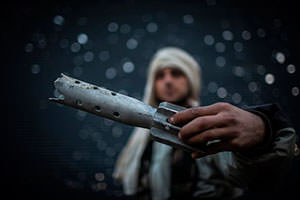
By Thomas Hedges, Center for Study of Responsive Law
Two weeks ago, rebels set off three car bombs in Damascus, Syria, killing more than 70 people, most civilians. The next day, government forces fired a Scud missile into the northwestern city of Aleppo, killing about a dozen people and burying others in rubble.
The attacks are a reminder that the civil war in Syria is not a romantic democratic uprising, although one could get that impression from accounts in mainstream media outlets. That’s because American newspapers largely use photographs and quotations from the Free Syrian Army, the main opposition group.
Government forces have been more indiscriminate in the killing of civilians than have the rebels, but the opposition groups are not exempt from carrying out atrocities. Rebel bombings and attacks on government strongholds have killed many civilians, the latest seen in the explosions two weeks ago. When the Free Syrian Army denies responsibility for its attacks, many reporters are loath to address or challenge the refutations.
Reporting from inside Syria has proved difficult. Journalists seeking to travel there may receive one-week visas from the regime, but movement is limited. Others have been taken hostage by, it is believed, government forces, as in the cases of two independent reporters — Austin Tice and James Foley — who are still in captivity if not dead. The conflict in Syria is the most dangerous in the world to cover, with 28 journalists killed there in 2012.
Journalists and photographers, who must use the rebels for protection, depend on the insurgents for updates on the fighting. Western media have remained skeptical of press releases from the government-owned Syrian Arab News Agency. Although statements from SANA or from Syrian President Bashar al-Assad himself are often published or broadcast, they are met with tremendous criticism and doubt. The voice of the Free Syrian Army triumphs over that of the Assad regime in Western media.
In the last two months, for example, The Washington Post and The New York Times have collectively published 37 photographs of rebel fighters, showing injured and dead soldiers. Only two photographs depicted government forces.
If “you’re not allowed to go to the place where you can tell the truth,” says Mary Anne Golon, director of photography at The Washington Post, “you’re not hiding anything. You just don’t have the truth to tell.”
The Post does its best to balance coverage by writing about the side that is not photographed as often, she explains.
But coverage of the bombings two weeks ago suggests that this is not always the case. The Post and the Times relied, as they have for a long time, on rebel fighters almost exclusively for information and quotations about the incidents.
There was no follow-up, for example, when an insurgent told a reporter from the Post that “the regime kills civilians” and that “the Free Syrian Army does not.”
Golon notes reluctantly that “in a conflict zone, there’s always going to be propaganda.”
But many journalists disagree with Golon, arguing that the mainstream media bear much of the responsibility for reducing the conflict in Syria to a battle between good and evil — rebels versus the Assad regime.
There has been “poor coverage of the Middle East by white journalists who don’t speak Arabic and who do not obtain an expertise in the region,” says a reporter who, because he is in and out of Syria so often, asked to remain anonymous. “In Syria more than elsewhere I have seen this.
“On the other hand there is a flood of ‘information’ coming out of Syria,” he continues. “Knowledge is being produced but it explains nothing and only obfuscates. This is because journalists reporting from Syria rely on local activists who have an agenda. That is not accurate reporting, but the overthrow of the regime with international assistance.”
Even in Washington, the reporter says, journalists are turning to pundits who automatically uphold American foreign policy and have spent little time covering the Middle East from the ground.
“When it’s time to quote experts,” he says, “American journalists inevitably turn to the same few white people at the Zionist and neocon Washington Institute for Near East Policy or a few anti-Syrian regime Lebanese politicians.”
As a result, Western media have not captured the resilience of the Assad regime. Many predicted a swift defeat of the Syrian government in April 2011 when the rebels began their onslaught.
Civilian support for the regime is also ignored, the reporter says. As much as half of the Syrian population is either loyal to Assad or at least wary of the opposition, a situation that is underreported.
“Action hero reporters have gone in to get shot at,” the reporter says, “and [to] talk about the brave and desperate villagers dodging the mortars of the regime.” But it is “the same story that has been done over and over, which does not educate the readers.”
Many news outlets, he adds, find it easier and less controversial to bolster their countries’ foreign policy and thus empathize with the opposition.
It is “a new development for journalists who could never write objectively about insurgents in Iraq, Afghanistan or Palestine,” he observes. “Their suspicious and sudden selective sympathy for Arab victims has come with a lack of critical understanding of the complexities of the Syrian civil war.
“As a result,” he says, “all we see is villagers fighting an invisible enemy.”
This article was made possible by the Center for Study of Responsive Law.
Your support matters…Independent journalism is under threat and overshadowed by heavily funded mainstream media.
You can help level the playing field. Become a member.
Your tax-deductible contribution keeps us digging beneath the headlines to give you thought-provoking, investigative reporting and analysis that unearths what's really happening- without compromise.
Give today to support our courageous, independent journalists.
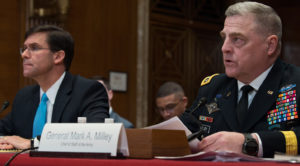
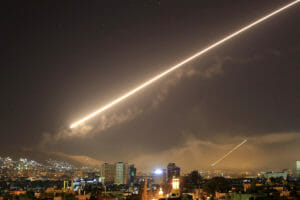
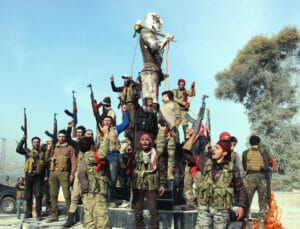
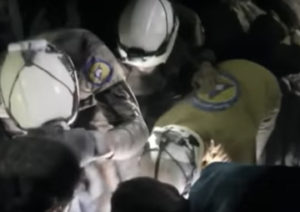

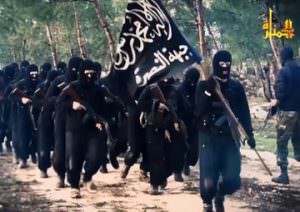
You need to be a supporter to comment.
There are currently no responses to this article.
Be the first to respond.